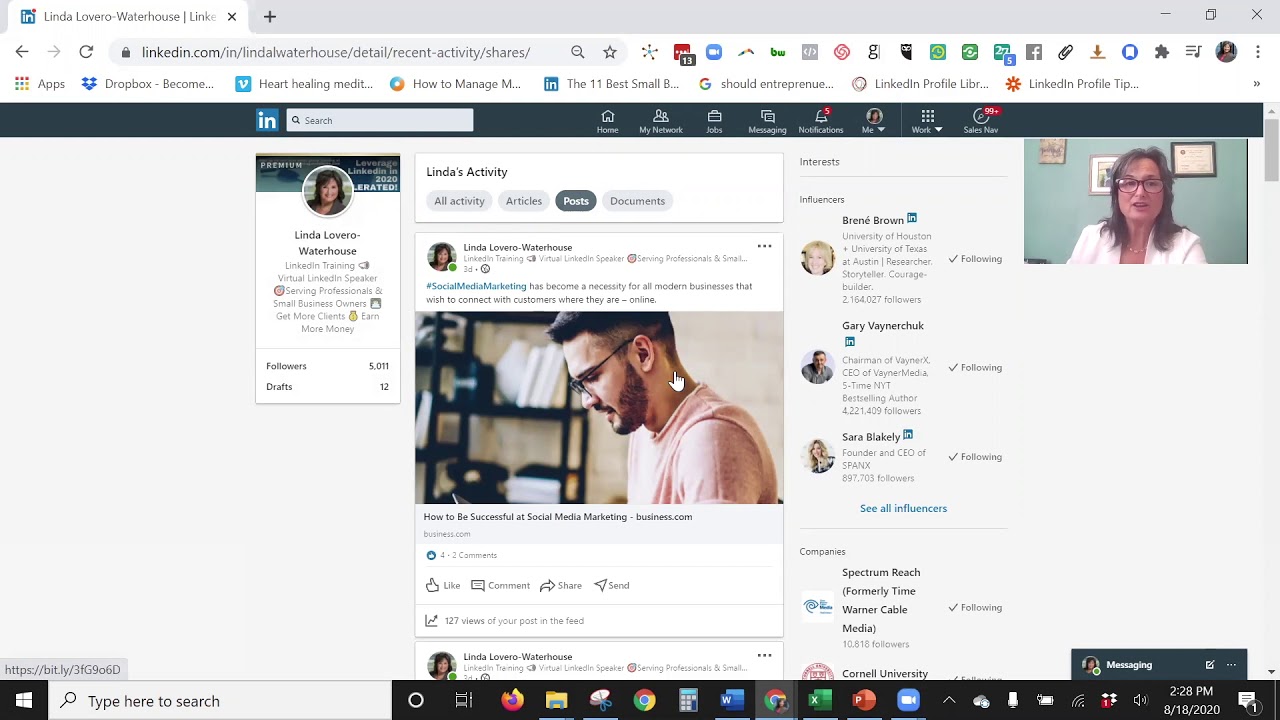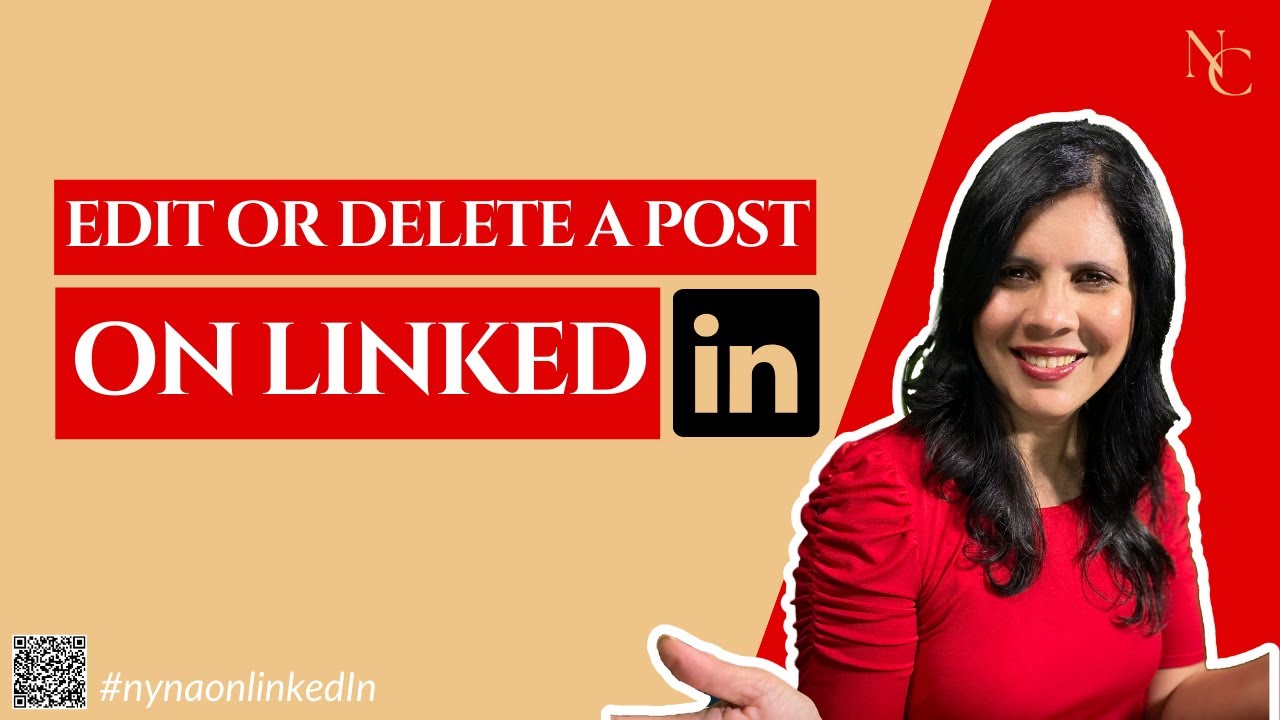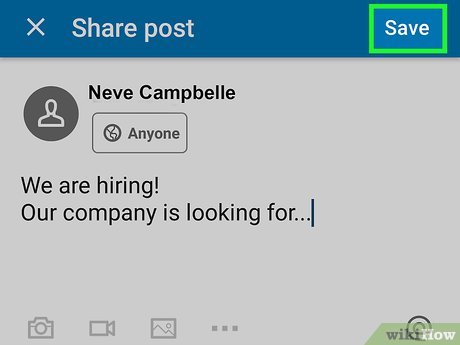Have you ever hit the “publish” button on a LinkedIn post, only to find a typo or a formatting mistake right after? Don’t worry, you're not alone! Editing a post after you've published it is not only possible but also quite simple. In this guide, we'll walk you through the process of adjusting your LinkedIn content, ensuring your professional image stays polished and your message clear. Let’s dive into how you can easily edit your
Understanding LinkedIn Post Editing

When you put your thoughts out into the LinkedIn community, it's important to present them in the best possible light. Editing your posts can enhance clarity, correct errors, and even update information as necessary. So, let's break down the process and some key tips for effective editing!
First things first, LinkedIn allows you to edit almost any type of post you've published, whether it's a text update, an article, or even a video. However, there are some guidelines and steps to follow:
- Access Your Post: To begin editing, you'll need to find the post you wish to change. You can do this by visiting your profile or your activity feed.
- Click on the “More” Option: Once you locate your post, look for the three dots (often referred to as the “More” button) located at the top right corner of your post.
- Select “Edit Post”: From the dropdown menu, click on the “Edit Post” option. This will allow you to make changes directly in the text box.
When you enter the editing mode, you can update the text, add hashtags, tag other users, or include links. It’s a great chance to refine your message. However, keep in mind that there are some limitations:
- You can only edit the content but not the shared media or the original publication date.
- LinkedIn keeps track of your edits, meaning that readers can see that changes have been made.
- While LinkedIn permits a fair amount of editing, frequent or major revisions can confuse your audience, so it's best to keep edits minimal.
After making your desired changes, don’t forget to review everything one more time. A fresh set of eyes, even just seconds after your initial review, can catch mistakes you might have overlooked. Once you’re satisfied, click the “Save” button!
Another important consideration is timing. If you notice an error immediately after posting, your editing chances are high. However, the further away from the post date you get, the more critical precision becomes. Always aim to edit promptly to maintain engagement and ensure clarity in communication.
Lastly, it’s worth noting that consistency is key. Regularly reviewing and editing your posts ensures that your profile reflects your professionalism and commitment to quality. If you're open to feedback, consider asking trusted connections to look over your posts before you hit publish. They might spot issues you missed!
In conclusion, editing your LinkedIn posts is straightforward, and doing so can greatly enhance the professionalism of your profile. So the next time you make a mistake or just want to polish your ideas, you’ll know exactly how to tackle it!
Also Read This: What Does the Shield and Check Mark Mean on LinkedIn: A Guide to LinkedIn’s Verification Symbols
3. Steps to Edit Your LinkedIn Post

Editing your LinkedIn post is a straightforward process, and it's great to know that you have the flexibility to make adjustments even after hitting 'publish'. Here’s how you can do it:
- Locate Your Post: Start by navigating to your LinkedIn homepage. Scroll through your feed or go directly to your profile page to find the post you want to edit. You might find it helpful to look under the 'Activity' section, where all your posts and activities are displayed.
- Access the Post's Options: Once you've found the post, hover your mouse over the three dots (•••) located in the upper right corner of the post. Clicking on this will reveal a dropdown menu with several options.
- Select "Edit Post": From the dropdown menu, click on the "Edit post" option. This action will take you to the post editing interface, where you can modify the content as needed.
- Make Your Changes: In the editing window, you can edit the text, add or remove hashtags, and even change any links if necessary. Make sure that everything is as you desire before saving changes.
- Save Your Changes: After you finish editing, click the “Save” button to apply your changes. You’ll notice that LinkedIn may mark the post as “Edited” to indicate that changes have been made; this way, your connections know that there’s been an update.
That’s it! Your post is now updated, and any changes are live on your profile. Remember that while it’s easy to edit, it’s best to double-check before publishing to minimize the number of edits you need to make later.
Also Read This: How to Get a Job on LinkedIn: Tips for Job Seekers to Maximize LinkedIn Opportunities
4. Things to Consider When Editing

Editing a post is not just about fixing typos or adding a missed tag. There are several factors that you should keep in mind when you choose to update your content:
- Timing: Consider the timing of your edits. If your post has already garnered a lot of engagement—likes, comments, shares—making significant changes might confuse your audience. If it’s a simple correction, however, a quick edit is likely fine.
- Engagement Impact: Be aware that changing the content could affect how your audience interacts with it. If you change the call-to-action or the primary message, the responses might shift. Always try to maintain the essence of the original post unless there’s a compelling reason to pivot.
- Context Matters: If you’re editing for clarity or to add details to clarify a previous point, make sure the new information is contextually relevant. Readers who engage with the post before and after an edit should still find the content coherent.
- Professional Image: Editing can reflect on your professionalism. While it’s okay to make corrections, frequent or significant changes might suggest a lack of care in your initial posting. Strive for quality before posting to reduce the need for edits.
- Notify Your Audience: Sometimes, it might be beneficial to comment beneath your edited post to notify your connections that you've made adjustments. This transparency can help maintain trust with your audience.
By keeping these considerations in mind, you’ll not only improve your posts but also engage more effectively with your network. Editing thoughtfully can enhance the quality of your LinkedIn presence, helping you to make a stronger professional impression!
Also Read This: Can Changing Your Name on LinkedIn Cause You to Lose Followers
5. How Edits Affect Engagement and Visibility
When you hit that "post" button on LinkedIn, you're unleashing your thoughts into the vast professional landscape. But what happens when you go back to tweak that post? It’s crucial to understand how edits can impact both engagement and visibility.
Engagement: LinkedIn is all about building connections and fostering discussions. When you edit a post, the initial engagement (likes, comments, shares) may take a hit because LinkedIn’s algorithms might treat it as if it’s a new post. This means that your post might be shown to fewer people initially after an edit, potentially reducing the interaction you were hoping for.
That said, making a post more relevant or correcting factual inaccuracies can lead to increased engagement later on. If your edits improve clarity, add value, or prompt further discussion, you can compensate for any initial drop in engagement. Remember, quality matters more than quantity!
Visibility: Visibility on LinkedIn is heavily influenced by how well your posts resonate with your audience. When you edit a post, the way the LinkedIn algorithm sees it can change. If your edits make the post more engaging, it can rebound and end up in more feeds, but if the edits confuse or dilute the original message, you might find your post buried beneath others.
To give your post a fighting chance in the engagement game after editing, consider these tips:
- Timing: The best time to edit is soon after posting. This allows you to adjust while the post is still fresh in your connections’ minds.
- Engage with comments: Responding to comments before and after edits can help maintain visibility and encourage more interaction.
- Notify your network: If significant changes were made, consider sharing an update or comment on the post to draw attention back to it.
In conclusion, be strategic with your edits. They can potentially harm or help your post's performance. Always prioritize adding value and clarity, and keep an eye on how your audience responds to those changes.
Also Read This: What Awards to Include on LinkedIn? Highlighting Your Achievements on Your Profile
6. Common Mistakes to Avoid When Editing
Editing a LinkedIn post isn’t just about correcting typos or fixing sentence structure; it’s also about ensuring that your message stays engaging and relevant. Here are some common pitfalls to avoid when you decide to hit that edit button:
- Over-editing: It’s tempting to overanalyze your post and make excessive changes. Remember, your original content resonated with your audience for a reason. Too many edits can strip it of its authenticity.
- Ignoring Engagement: If commenters have posed questions or offered input, make sure your edits capture the essence of those interactions. Ignoring their contributions can disengage your audience.
- Changing the Core Message: Be cautious about altering the fundamental message of your post. If the subject shifts too dramatically, you might confuse your audience or leave them thinking, “Wait, what was this about again?”
- Poor Timing: As mentioned earlier, the timing of your edits is critical. Editing a post days after it was published can confuse your audience, especially if it's a popular post. Immediate changes after posting are typically more effective.
- Neglecting Formatting: While editing, don’t overlook the layout and formatting of your post. Well-organized content that’s easy to read will keep your audience engaged. Use bullet points, headings, and paragraphs wisely.
By steering clear of these common mistakes, you’ll ensure that your edits enhance rather than hinder your LinkedIn posts. Remember, the goal is to stay authentic, connect with your audience, and encourage meaningful engagement!
Also Read This: How to Find Unique Impressions on LinkedIn Analytics
7. Best Practices for Editing LinkedIn Posts
Editing a LinkedIn post after it has been published can be a useful way to enhance your content, correct mistakes, or update information. However, to ensure your edits serve a purpose and resonate well with your audience, consider these best practices:
- Keep It Short and Sweet: While it might be tempting to overhaul your entire post, focus on making concise edits that enhance clarity. If you have more to say, consider creating a new post instead.
- Be Transparent: If you edit a post significantly, it might be beneficial to add a note in your edit (if applicable) or comment to inform your readers about the changes. This builds trust and keeps the conversation transparent.
- Prioritize Engagement: Check the comments section after your edits. Engaging with those who have commented can help stimulate further discussion and show that you value your audience's input.
- Use Visuals Creatively: If your original post included images or infographics, consider updating these if you change the content. Visuals play a critical role in capturing attention and conveying messages effectively.
- Check Your Tone: Make sure your tone remains consistent throughout the post. If you're editing to make the content more professional or approachable, review the entire post to align your voice.
- Proofread Your Edits: Just because you’re editing doesn’t mean you can skimp on proofreading. Spelling or grammatical errors can undermine your credibility. Take a moment to review your edits before finalizing them.
- Be Mindful of Original Posting Time: When you edit a post, it doesn’t change the date it was originally published. Be cautious of making edits that might cause confusion regarding the relevance of the content—especially if the context has changed significantly.
By following these practices, you’ll not only improve the quality of your LinkedIn posts but also enhance your reputation as a thoughtful and engaged member of the LinkedIn community.
8. Conclusion
Editing a LinkedIn post is an essential skill that can help you maintain a polished online presence and ensure your content remains relevant. Whether you're correcting a typo, adding new insights, or adjusting the tone, knowing how to effectively edit your posts can make a significant difference in engagement and professionalism on the platform.
Remember, the goal of editing is not just to fix mistakes but to refine your message and better connect with your audience. By following the best practices outlined above, you can turn your edits into opportunities for stronger interactions and discussions. Always keep in mind the importance of authenticity—your audience values your voice and perspective, so ensure that shines through in every revision.
In conclusion, take the time to review your LinkedIn posts occasionally. Embrace the power of editing not just to correct, but to enhance your communication. Happy posting!
 admin
admin








